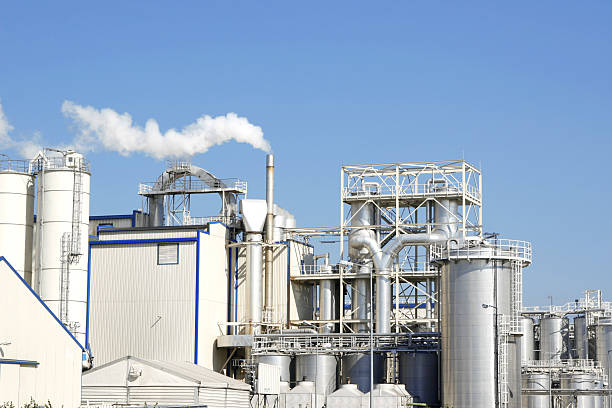December 21, 2022

A biocide is chemical treatment designed to control microbial growth. To reduce any risk associated with microbial growth, such as heat loss, under deposit corrosion and health hazards, it is important to implement the right biocidal treatment program.
In our previous blogpost, we talked about the most important factors to consider when selecting the right oxidizing biocides. In this blog post we focus on choosing the best closed circuit biocides.
There are many elements which can negatively affect level of microbial contamination in closed-circuit systems. They should be considered.
1. Cleaning prior to commissioning
It is essential to ensure the purity of the new system and to ensure that the use of appropriate biocide during the pre-commission cleaning (as as per BSRIA BG29/2020) is carried out.
2. Concentration
It is crucial to make sure that a biocide for closed circuits and closed-circuit inhibitor is included in the system at the proper concentration at the time of the initial fill / pressure testing and on a regular basis.
3. Nitrite-based formulation
A low-cost formula that is neutral and nitrite-based, which passesivates quickly and is suitable to multi-metal systems containing aluminum, such as Polyhib LC could be a good choice. However, alternative products are available, so please contact our technical department to get assistance on the best product for this purpose. If Polyhib LC is used as a holding charge when a system is filled with a biocide, it must also be dosed.
4. Closed system chemistry testing and monitoring of microbiological activity
As part of an ongoing maintenance regime conducting closed system chemistry tests and monitoring of microbiological activity in the system are essential. If there are high levels of bacteria, shock dosing with an appropriate oxidizing biocides is required to be performed to reduce their levels.
5. Biocide sensitivity analysis
It is possible for resistance to grow over time, and it may be necessary to modify the biocide dosage regimen. It is possible for certain systems to undergo a biocide-sensitivity analysis to find the most efficient biocide. Our on-site laboratory can accept samples for analysis of the biocide's sensitivity. We then can conduct the test on behalf of customers. Please contact us for further information and prices for this service.
6. Biodispersants
If there is a high concentration of biofilm or bacteria, it may be necessary to use a biocide along with a biodispersant that is compatible, such as BV167 or. It is crucial to think about where this biofilm is going to go in a system as it is removed from the metal surfaces. If the system is equipped with strainers or filters dispersed throughout the system, these will need to be regularly inspected and cleaned after doingsing to eliminate dislodged biofilm. Blockages may be experienced if the system is equipped with small bore pipework which isn't covered by strainers or filters. Biodispersants may not be appropriate for all systems.
7. Temperature
If the temperature stays consistently at or above 60degC throughout the entire area of a fully circulated LPHW (Low Pressure Hot Water) system, then a biocide is not generally required. If such a system is being used in the summer, it is recommended that a biocide is added and allowed to circulate throughout the system prior to when it is turned off. BSRIA BG 50 recommends a minimum of an hour of circulation for cooling and heating circuits, as well as in the case of seasonal systems.
8. Glycol
In a chiller system containing glycol, the levels must be maintained at an optimal concentration of 25% in order to stop the growth of bacterial. The glycol concentration is biostatic, i.e. it inhibits the growth of bacteria. Glycol is used as an nutrient by bacteria that are below this threshold.
Important to remember that biocidal products should be treated with care and that all operatives must use the appropriate personal protective equipment (PPE). Before making use of any biocide, it is crucial to review the Safety Data Sheet (SDS).
Posted by: HailieiTorres at
10:18 AM
| No Comments
| Add Comment
Post contains 673 words, total size 5 kb.
35 queries taking 0.0332 seconds, 61 records returned.
Powered by Minx 1.1.6c-pink.









